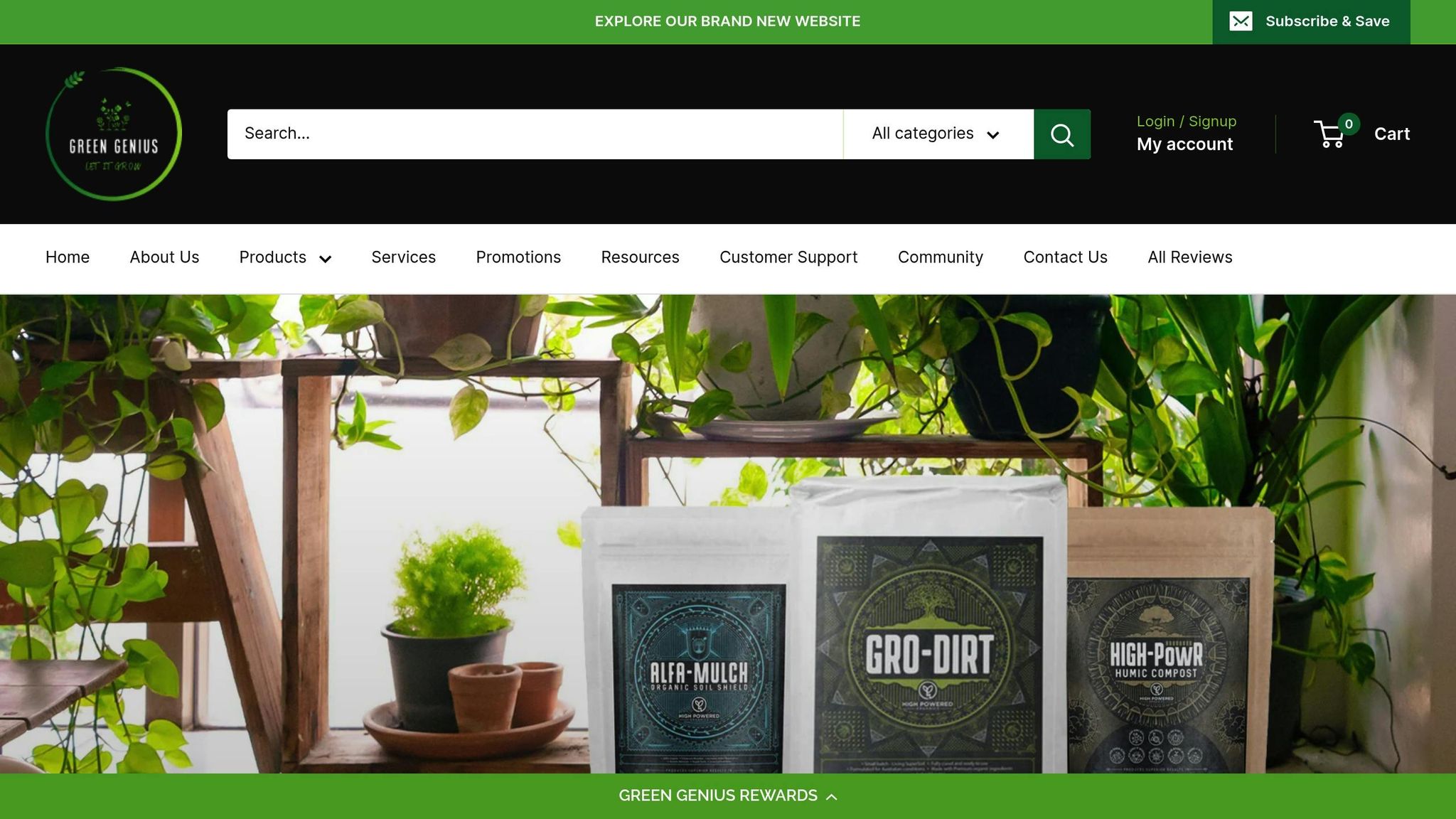Vapor Pressure Deficit (VPD) is the difference between the moisture inside a plant's leaves and the surrounding air. It directly impacts how plants absorb water and nutrients, making it crucial for healthy growth. Here's why it matters:
- Low VPD (<0.3 kPa): Reduces transpiration, slowing nutrient uptake and increasing disease risks.
- Optimal VPD (0.3–0.5 kPa): Promotes balanced water movement and nutrient absorption - ideal for young plants.
- High VPD (>2.2 kPa): Causes water stress, stunted growth, and leaf damage.
Quick Tips for Managing VPD
- Use tools like VPD sensors to monitor temperature and humidity.
- Adjust settings based on plant growth stages:
- Vegetative: 0.8–1.1 kPa
- Flowering: 1.0–1.5 kPa
- Maintain airflow and control moisture to avoid stress-related issues.
By managing VPD effectively, growers can improve plant health, reduce crop losses, and enhance yields, especially in climates like Australia's. Keep reading for detailed strategies and tools to optimize VPD in your grow area.
Humidity 102: Vapor Pressure Deficit - VPD Chart
VPD Effects on Plants
For Australian growers, understanding how vapor pressure deficit (VPD) influences plant processes is key to achieving healthy growth and better yields. VPD plays a direct role in plant water movement, nutrient distribution, and overall health.
Plant Water Movement
VPD is a driving force behind how plants move water and distribute nutrients. When VPD stays within an ideal range, plants efficiently absorb water and transport nutrients throughout their systems.
Here’s how different VPD levels affect water movement and growth:
| VPD Range | Effect on Water Movement and Growth |
|---|---|
| Low (<0.3 kPa) | Limited water flow, which can lead to nutrient shortages |
| Optimal (0.3-0.5 kPa) | Balanced water flow, promoting effective nutrient uptake |
| High (>2.2 kPa) | Excessive water loss, restricting growth |
These patterns highlight why keeping VPD within the right range is so important for plant health and growth.
VPD Levels and Plant Health
Deviations from the optimal VPD range can stress plants and impact their health. Australia’s variable climate, especially in summer, often brings high VPD levels that challenge plant resilience. When VPD exceeds 2.2 kPa, plants react by:
- Closing their stomates (tiny openings on leaves)
- Reducing photosynthesis
- Experiencing higher leaf temperatures
- Developing calcium deficiencies
On the flip side, low VPD levels in humid conditions create their own issues, such as:
- Reduced transpiration
- Slower nutrient absorption
- Increased risk of diseases due to excess moisture
- Poor calcium distribution
These challenges can lead to visible problems like tipburn in lettuce or blossom end rot in tomatoes and cucumbers. Regularly monitoring environmental conditions and plant responses allows growers to address these issues early. By maintaining optimal VPD levels, growers can minimize stress-related crop losses and support healthier, more productive plants.
VPD Targets by Growth Phase
Managing VPD (Vapor Pressure Deficit) effectively requires specific targets tailored to each growth phase. This is especially important for Australian growers dealing with diverse climate conditions.
VPD for Vegetative Growth
During the vegetative stage, plants need an environment that encourages strong stem and leaf development. The ideal VPD range here is 0.8–1.1 kPa, which can be maintained by focusing on these key factors:
- Temperature: Keep it around 20–25°C to support active growth.
- Relative Humidity: Aim for 60–70% to ensure proper transpiration.
- Airflow: Maintain airflow between 0.3–1.0 m/s for effective gas exchange.
Following these guidelines helps avoid problems like calcium-related tipburn and supports healthy vegetative growth, even during Australia's challenging summer months. Once plants move into the flowering phase, their VPD needs change to support bloom development.
VPD for Flowering
During flowering, a slightly higher VPD range of 1.0–1.5 kPa is recommended. This adjustment helps prevent moisture-related issues and supports flower development. Maintaining the right VPD at this stage ensures:
- Reduced risk of flower abortion.
- Better pollination success.
- Lower disease risk.
- Improved overall yield.
Temperature and Humidity Control
Achieving these VPD targets requires precise control over temperature and humidity, especially in grow rooms. For Australian growers, external climate fluctuations make in-room environmental control even more critical. In hydroponic setups, managing VPD accurately not only prevents water stress but also ensures plants absorb nutrients efficiently.
"A study on tomato production found that VPD regulation resulted in more efficient irrigation and better plant water balance."
sbb-itb-28a8941
Managing VPD in Australian Grow Rooms
Australia's climate is diverse, making precise control of environmental conditions essential for successful plant growth.
Tools for Measuring VPD
To measure VPD effectively, you’ll need tools like infrared thermometers for leaf temperature, digital hygrometers for real-time humidity tracking, and integrated VPD sensors such as the Titan Controls Tali 3-In-1.
For the best results, place sensors at the same height as your plant canopy. This ensures the readings reflect the actual conditions your plants experience, helping you make accurate climate adjustments.
Setting Up Climate Control
Managing VPD requires a well-integrated climate control system. Here’s a breakdown of the equipment you’ll need:
| Equipment Type | Purpose |
|---|---|
| Humidifiers | Add moisture during vegetative growth phases |
| Dehumidifiers | Reduce humidity during flowering stages |
| Air Conditioning | Regulate temperature |
| Air Circulation | Maintain airflow (0.3–1.0 m/s) |
These tools work together to maintain the right VPD levels for your plants, whether you're growing in soil or using hydroponics.
Managing VPD in Hydroponic Systems
Hydroponic setups require special attention to VPD. Key points to keep in mind:
- Monitor both root zone and air temperatures, as both impact water uptake and nutrient absorption.
- Adjust nutrient delivery schedules during high VPD conditions, as plants will absorb water more quickly.
- In aeroponic systems, increase misting frequency when VPD levels are higher to prevent roots from drying out.
"Research into lettuce growing has found that maintaining optimal VPD levels can improve crop productivity by enabling crops to work optimally instead of adjusting to environmental changes."
VPD management is crucial in hydroponics because it directly influences how plants take up nutrients. If VPD levels rise too high, plants may struggle to move water efficiently, leading to potential nutrient imbalances even in well-maintained systems.
Green Genius: VPD Management Tools

Green Genius helps you take control of your VPD (Vapor Pressure Deficit) with precision tools and expert advice, ensuring steady growth at every stage. Their advanced equipment is designed to integrate effortlessly into your grow room setup.
Green Genius VPD Equipment

Green Genius offers a range of tools that monitor and manage VPD with ease. Here's a quick look at their key products:
| Equipment Type | Features | Purpose |
|---|---|---|
| Smart VPD Sensors | Real-time monitoring, mobile alerts, cloud data logging | Tracks environmental conditions 24/7 |
| Climate Controllers | Automated adjustments, multi-zone control, custom presets | Manages temperature and humidity |
| Hydro-Integration Units | Root zone monitoring, nutrient delivery optimization | Supports hydroponic systems |
These tools ensure consistent performance, no matter the climate.
Expert Growing Support
Beyond their advanced tools, Green Genius provides expert growing support to help you fine-tune your VPD settings for the best results.
Their consultation services include:
- Personalized environment analysis to identify specific needs.
- Guidance on sensor placement and configuration for optimal setup.
- Tailored VPD adjustments to match different growth phases.
According to their data, using these tools and services can lead to a 20-30% increase in crop yields while significantly cutting water usage.
Customer Benefits
Green Genius users gain access to a variety of perks, including:
- Real-time monitoring through a mobile app.
- Around-the-clock technical support.
- A comprehensive knowledge base on VPD management.
- Community forums for connecting with experienced growers.
- A rewards program offering discounts on equipment and access to expert workshops.
Conclusion
Main Points
Managing VPD (Vapor Pressure Deficit) effectively is crucial for thriving crops in Australia's varied climates. By keeping VPD levels in check, growers can minimize nutrient and water stress, leading to healthier plants and better yields. As discussed earlier, controlling temperature and humidity with precision is the foundation. Studies show that maintaining recommended VPD levels in controlled environments consistently improves crop performance.
Getting Started with VPD
Start by focusing on accurate measurement and control. Many Australian growers suggest maintaining a VPD of 0.3–0.5 kPa with high humidity during rooting or cloning stages. For mature plants, aim for a VPD above 0.5 kPa while ensuring balanced moisture and proper airflow. This becomes even more important given Australia's unpredictable weather patterns.
Use modern sensors and dependable climate control systems to track and adjust VPD. These tools help prevent problems like nutrient imbalances and moisture-related issues. With the right approach, growers in Australia can create optimal growing conditions year-round, no matter the external climate challenges.
FAQs
What is the ideal VPD for houseplants?
The ideal Vapor Pressure Deficit (VPD) for houseplants in Australia depends on the plant's type and growth stage. For young or propagating plants, aim for a VPD around 0.3 kPa to minimize water stress and promote root growth. For mature plants, a slightly higher VPD - above 0.5 kPa - can encourage healthy transpiration while lowering the chance of disease. Since Australia's climate can vary widely, adjust your VPD settings based on the plant's age and species. Regular checks and adjustments are essential to keep your houseplants thriving.
This understanding of VPD works hand-in-hand with broader climate management strategies.
What is the difference between humidity deficit and VPD?
While "relative humidity" (or humidity deficit) and "Vapor Pressure Deficit (VPD)" are sometimes mixed up, they measure different things. Relative humidity indicates how much moisture the air holds as a percentage of its maximum capacity. VPD, on the other hand, measures the pressure difference between fully saturated air and the current moisture level. This is particularly important for Australian growers. For instance, a grow room with 60% relative humidity might still have a VPD that isn’t ideal due to temperature shifts. By focusing on VPD, growers can fine-tune climate settings to maintain the right balance of moisture and airflow.

